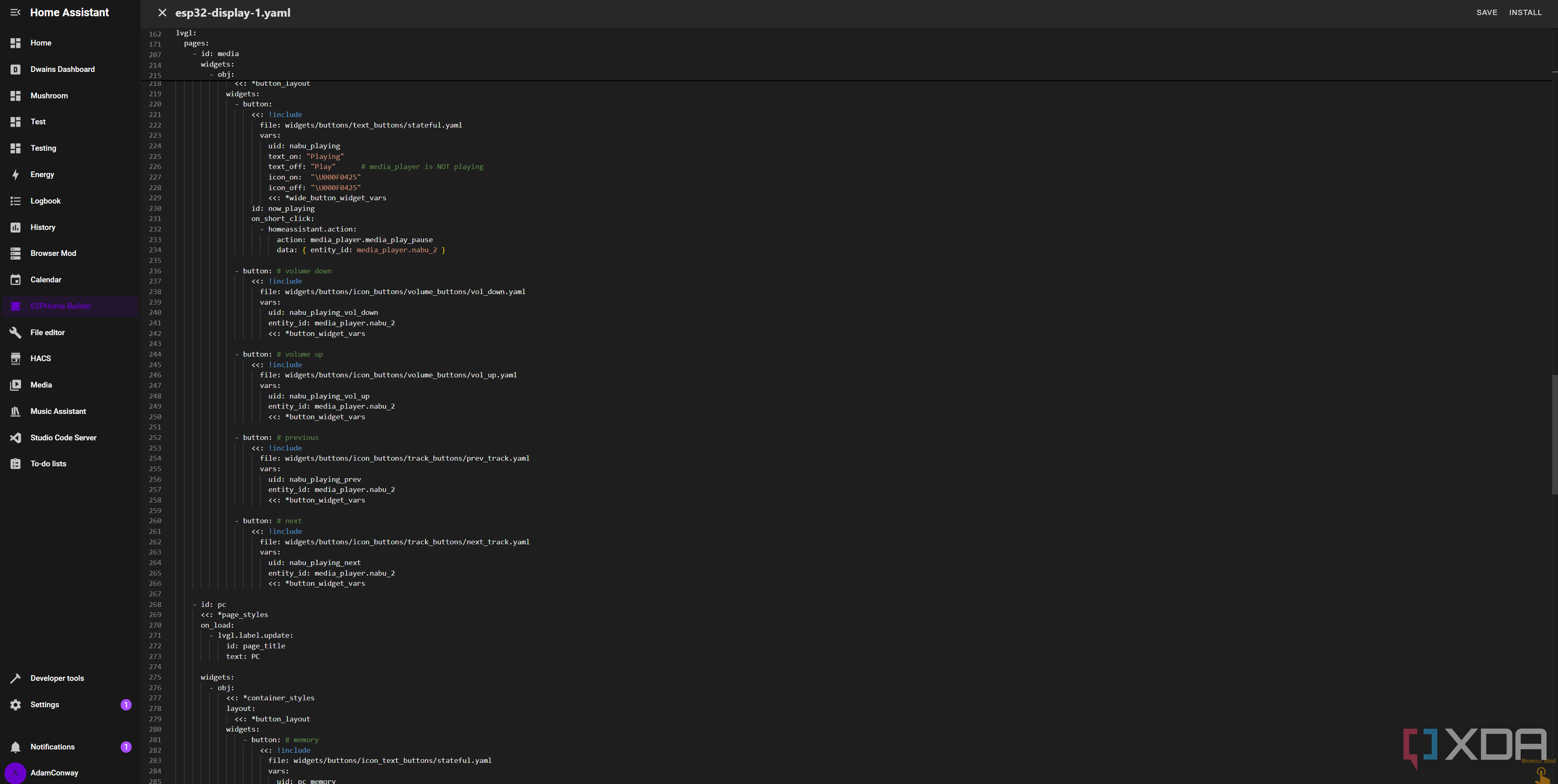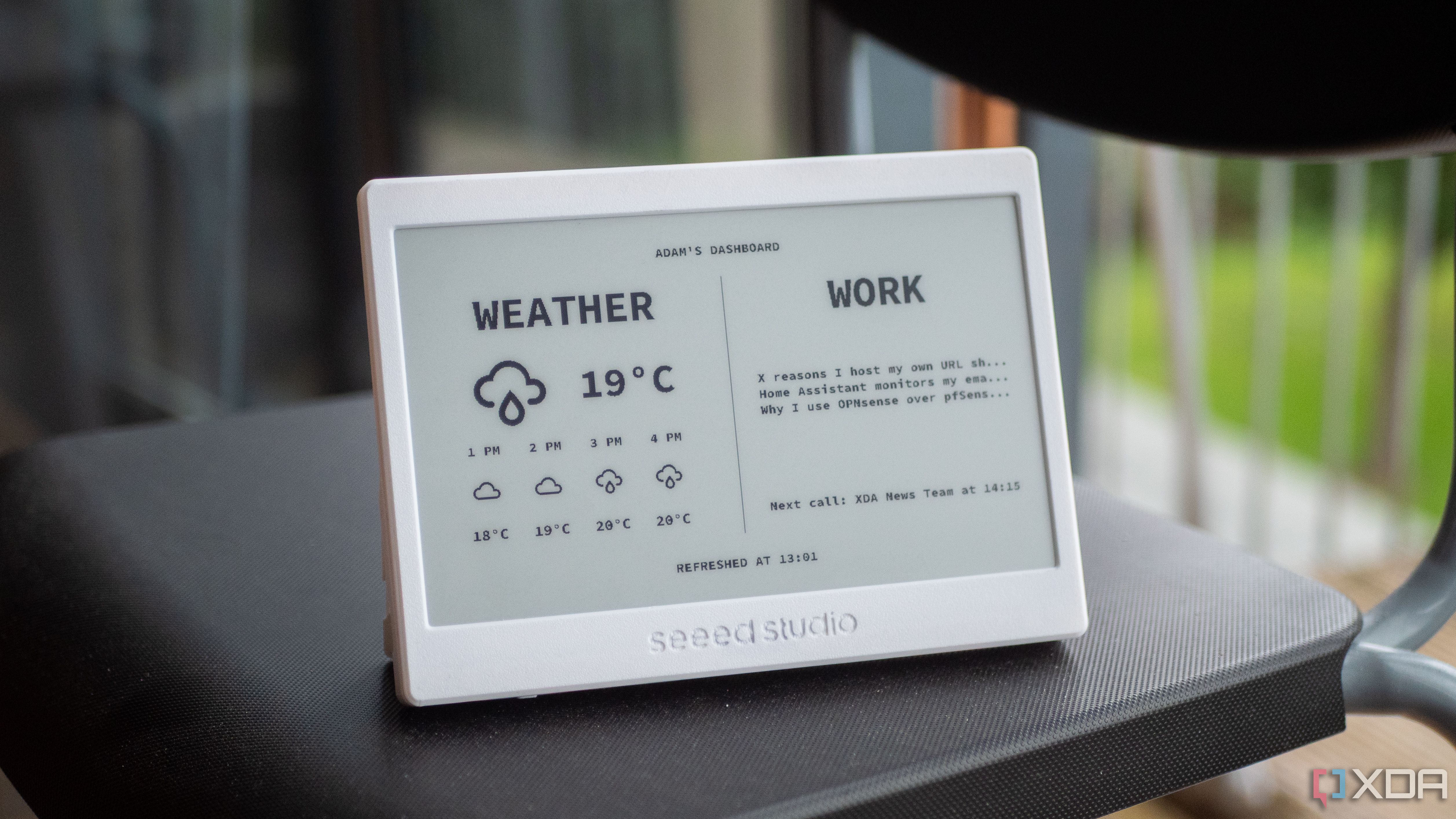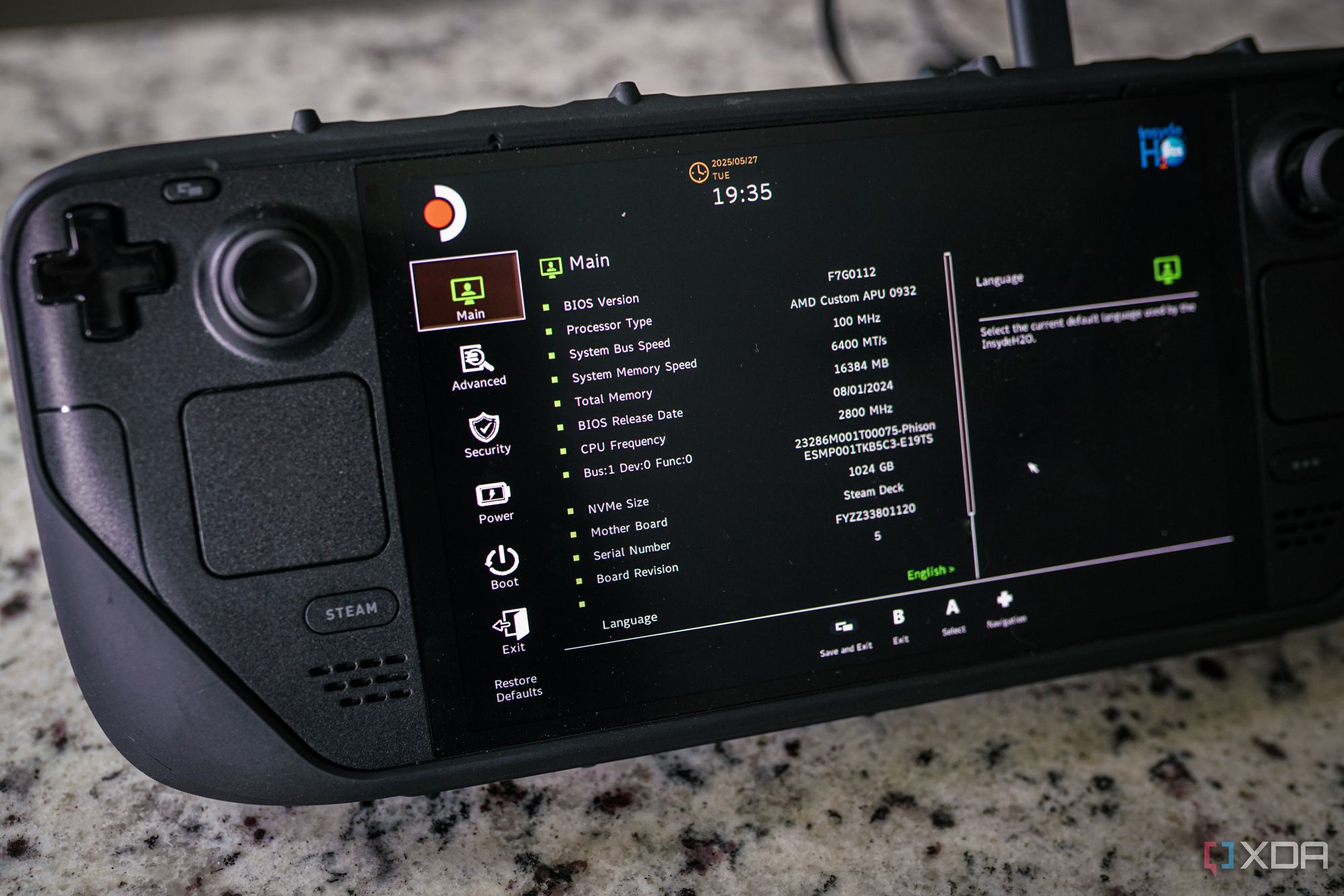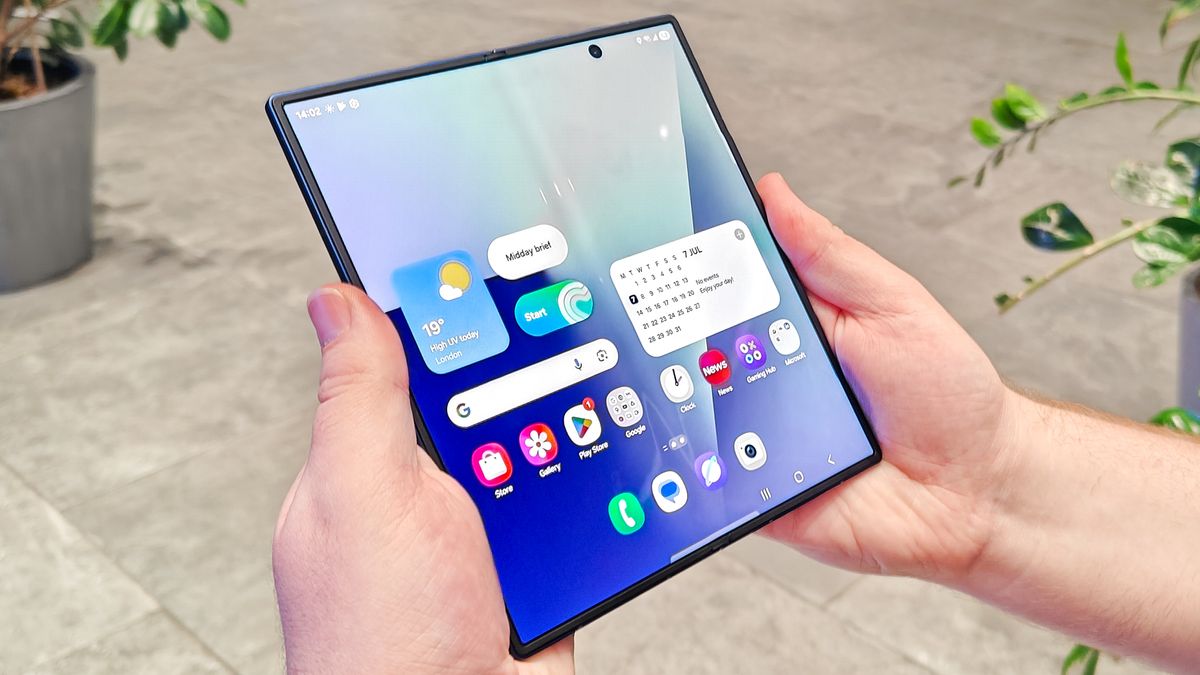In the realm of technology, few pursuits of mine have offered the same level of satisfaction as building something from scratch or taking apart something that already exists and making it my own. That's why, when it comes to home automation and smart home tech, I absolutely love Home Assistant and ESPHome. Home Assistant has enabled me to build an interconnected web of self-hosted services and devices through its amazing integrations, and ESPHome has made it incredibly easy to build my own tools, such as an eInk dashboard, super-cheap smart sensors, and a PC monitoring dashboard.
Truth be told, diving down the smart home automation rabbit hole can be an expensive journey. All of these devices can set you back a few dollars, and those prices can add up quickly. Sure, there are cheap Zigbee-based devices that you can get for $10 or less, but for the most part, it can be an expensive hobby. However, in the context of building out my smart home, ESPHome has not only enabled me to learn a lot more about microcontrollers and smart home automation but it's actually saved me money by enabling me to build my own sensors, rather than purchasing pre-made solutions and deploying them instead. Plus, I get the benefit of truly owning all of the devices that I deploy.
What is ESPHome?
An open platform to build ESP32 devices

ESPHome is an open-source IoT (Internet of Things) platform that provides a comprehensive framework for building custom smart home devices. It leverages the powerful and cost-effective ESP8266 and ESP32 microcontrollers, which are immensely popular devices among big smart device makers like Tuya and hobbyists alike. These tiny chips offer Wi-Fi connectivity, ample processing power, and a wide range of input/output options, making them ideal for creating anything from simple sensors to complex automated systems.
What sets ESPHome apart the most is its commitment to local control and open standards. Instead of relying on cloud services, devices can communicate directly with each other or through a local home automation hub using protocols like MQTT (Message Queuing Telemetry Transport), or even directly to Home Assistant via ESPHome. This approach ensures faster response times, enhances privacy, and allows for seamless integration with existing smart home setups.
There's one other advantage ESPHome has, and that's the language you develop in: YAML. While more complex tasks involving lambda snippets (C++ code inside of your YAML, essentially) can make things more complicated than a standard toolchain for building software on an ESP32, YAML actually lowers the barrier to entry significantly. For example, the following lines of code are how you'd deploy a temperature sensor in ESPHome, as all of the other code is made for you when you add a device.
sensor:- platform: dht
pin: D2
temperature:
name: "Living Room Temperature"
humidity:
name: "Living Room Humidity"
update_interval: 60s
That's it. A basic ESP32 can cost as little as $4, the temperature sensor can be as little as $0.50, and with just five minutes of your time, you can have a temperature and humidity sensor that you control reporting data back to Home Assistant. It's why I love it, and the simplicity is why plenty of other people love it too.
My ESPHome journey so far
From basic sensors to full-on smart hubs
My first foray into ESPHome came about as a result of a growing interest in microcontrollers in general. I've always had an interest in electronics and embedded devices, and I wanted to challenge myself. I was confident that I could figure out whatever difficulties I'd face, and the end result was going to be a lot of new knowledge, experience, and, hopefully, fun. I started off with a couple of basic ESP32-D0WD-V3 boards, alongside a random assortment of sensors aimed at Arduino beginners. I basically just tried to hook up what I could to figure out how it all worked, and I built a device with an LCD screen (with contrast controlled by a potentiometer), a button, and an LED. The button would cycle through a few different sensors in ESPHome, and the LED would change color whenever I was registered as being in a call on Google Calendar.
To be honest, while there was a lot of reading involved, just how easy this was (compared to how difficult I had thought it would be) had me instantly hooked. I experimented with a lot of different devices, as I had a ton of sensors from the Arduino kit that enabled me to build and play around with some really cool stuff. Soon after, I bought a bigger breadboard, and then, later, the ESP32 Cheap Yellow Display. At that stage, I already felt willing to venture into the world of LVGL, the low-level graphics library that makes it a lot easier to build pretty graphical user interfaces on an ESP32. The difficulty I had with this is that ESPHome's LVGL support is rather new, meaning that documentation is sparse, so it took a bit of time to figure out what was going on. And I say that as a pretty comfortable programmer most of the time.

Since then, though, I've built a couple of dashboards for my CYD, and I've been experimenting with the WT32-SC01 Plus. As well, I also designed and built the UI for my Seeed Studio 7.5-inch ePaper Panel that I purchased, though that only uses the "regular" ESPHome graphics library, rather than LVGL. Still, these are devices I'd have never played with or learned how to use if not for ESPHome, and they're genuinely a quality-of-life improvement. Being able to see my PC's metrics on an external device on my desk is fantastic, alongside being able to control my lights from it, and my ePaper display is fantastic for getting a quick overview of my work day and what the weather is like.
With that said, I wouldn't really call any of it "easy." To get started, sure, but once you're past the initial baby steps of configuring sensors, pulling from Home Assistant, and reporting data back, any custom logic can take a bit of getting used to for someone who may not be used to programming in C++. I primarily learned C, Java, and Python, and while many concepts transfer from my knowledge of C, it's been years since I wrote code in it, and it's not at all similar to C++ once you get past the basics. Plus, YAML formatting can be awful, especially when you're deep into writing C++ lambdas inside of blocks that are very reliant on correct indentation.
What's next?
The sky is the limit
ESPHome as a platform is continuously evolving, with new features, improvements, and community contributions regularly expanding its capabilities to do even more than it can already do. Even LVGL support started off as an external component implemented by the community that you could set up yourself. Even the WT32-SC01 Plus that I have was similarly supported by the community, followed up by official ESPHome integration a few months after, once community members submitted their drivers for the device. It's a great project built on the best parts of open-source ideals.
There's more I want to do, and my journey has actually led to me buying a soldering kit so that I can build more permanent fixtures with ESP32 boards that don't have broken-out pins. These are more compact, but require an additional level of skill to correctly implement. If it weren't for ESPHome, I wouldn't own a soldering iron, yet here I am. It's a valuable skill to learn, and the entire process from start to finish within ESPHome has made it feel like a natural transition rather than a plunge into the deep end.
For those considering dipping their toes into the world of DIY smart home automation, ESPHome is wonderful. Above all else, you gain the power to transform your living space into a truly intelligent environment that reflects your unique needs and preferences, and that's absolutely fantastic. I'm really impressed by what it can do, what it's enabled, and I'm so excited to build more devices and share those projects here.
.png)









 English (US) ·
English (US) ·